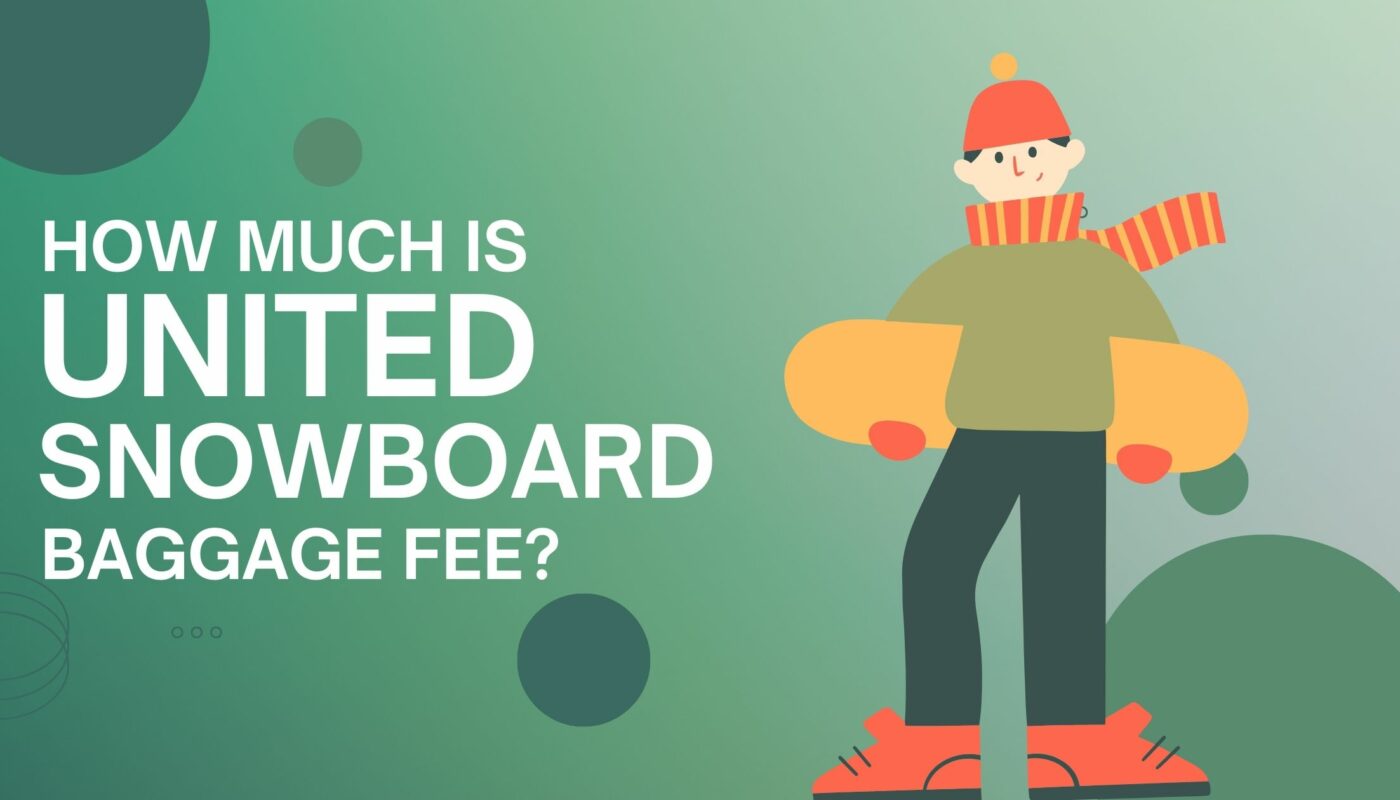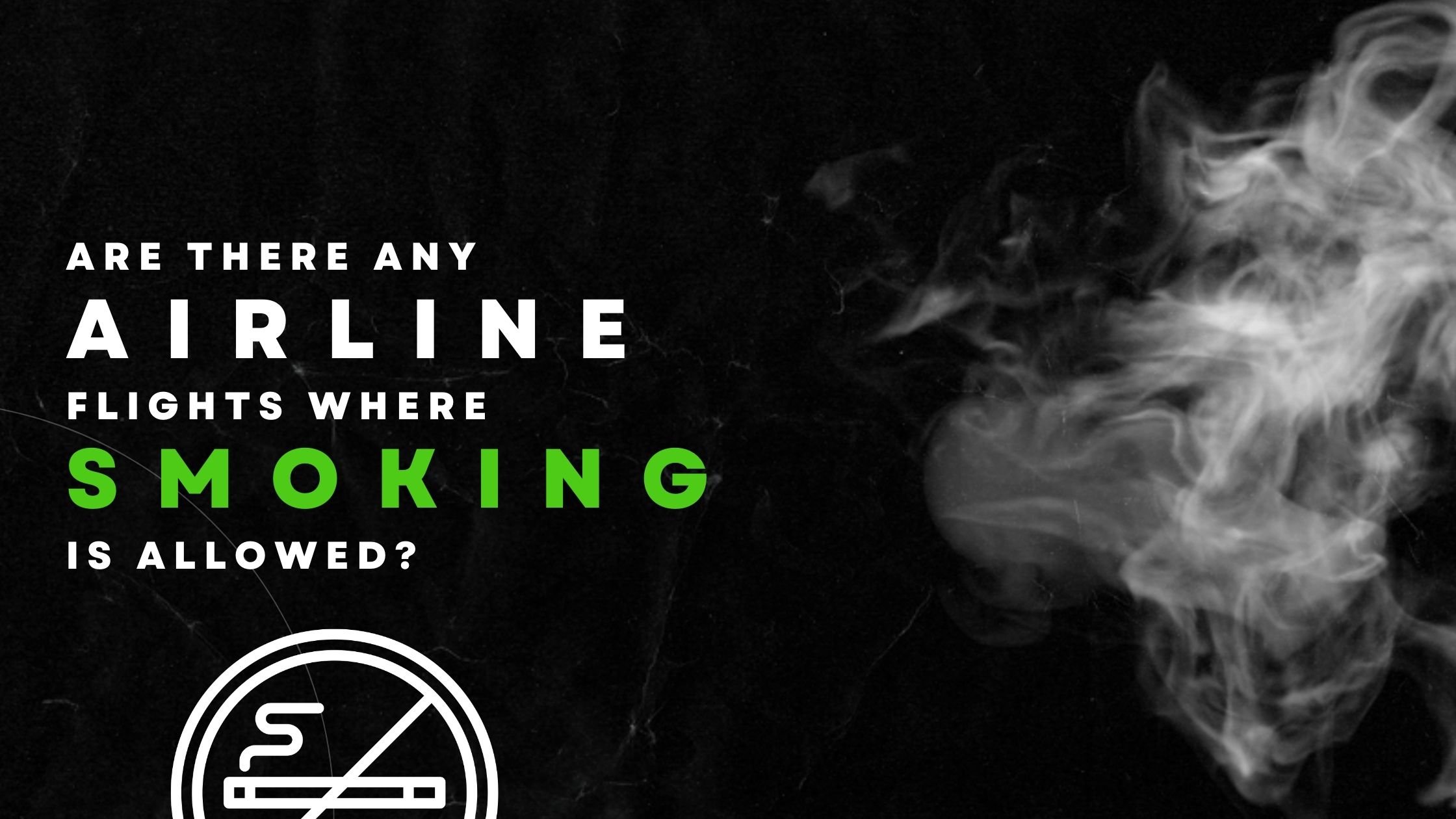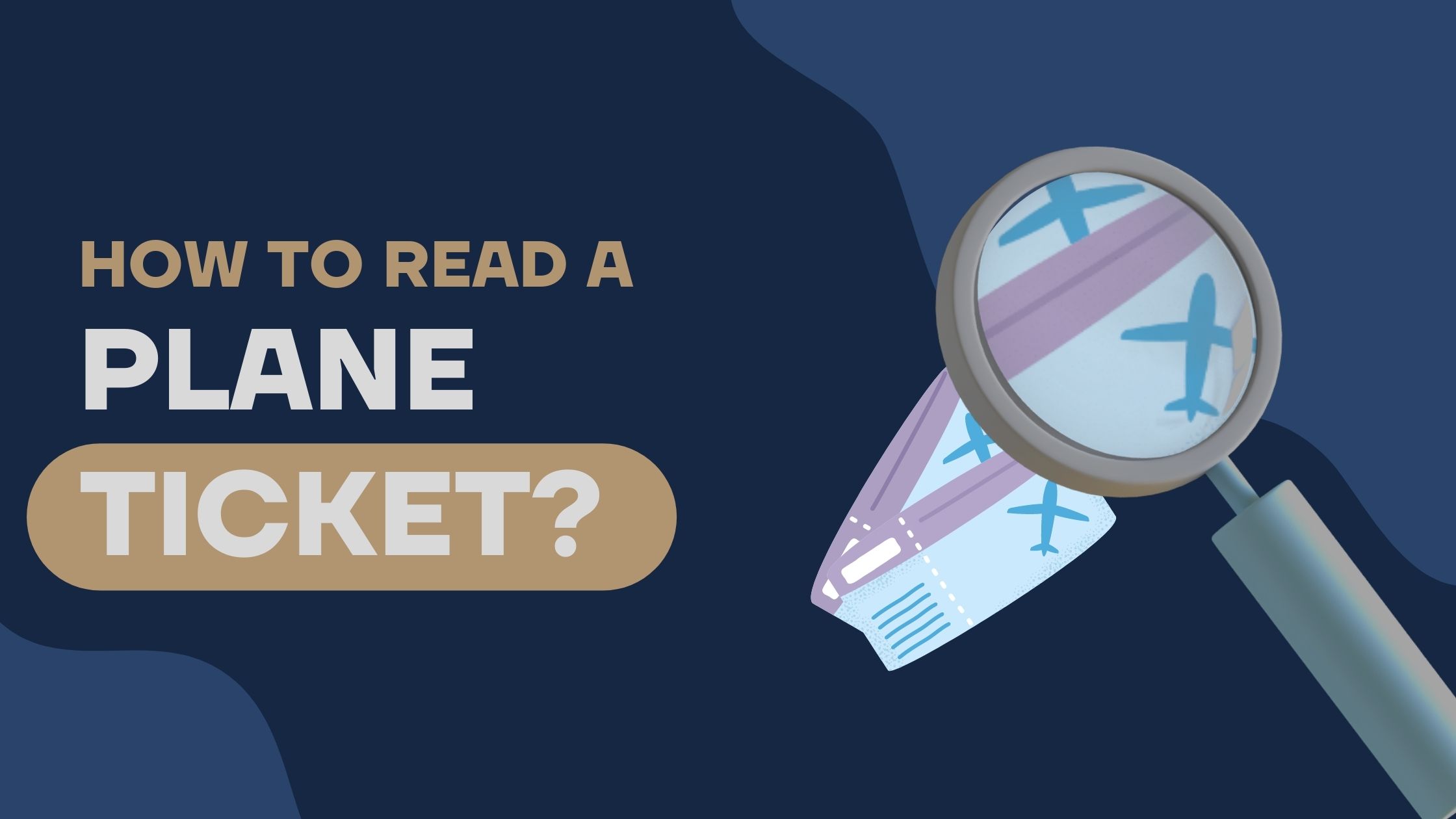Are you planning a snowboarding trip with United Airlines and wondering how much is United Snowboard baggage fee? It’s important to know the fees and regulations before you head to the airport to avoid any surprises.
In this article, we will explore United Airlines’ snowboard baggage fees and provide you with all the information you need to make your trip as smooth and cost-effective as possible.
How Much Is United Snowboard Baggage Fee?
United’s standard baggage fee for a ski bag and boot bag is $30 each way. This fee applies no matter how many bags you have, as long as the combined weight of the two bags does not exceed 50 pounds (23 kg).
If your ski bag or boot bag weighs more than that, you will be charged an additional overweight fee of $100-$ 200, depending on the exact weight of your gear. However, if you have an oversized ski bag, the oversize fee will be waived.
In addition to the baggage fees, United also allows skiers and snowboarders to check one pair of poles or one snowboard/kiteboard for free when traveling in the U.S., Canada, Puerto Rico, and St. Thomas.
When traveling with skis or snowboards, it’s important to note that they are considered “special items” by United Airlines and will need to be declared at check-in.
Make sure to have your skis or snowboard bag weighed and ready to go before you arrive at the airport for check-in.
If you’re looking to save a bit of money on your ski or snowboard travel expenses, consider packing light or looking for alternative transportation methods.
For example, many resorts offer free shuttles from nearby airports, which can help you avoid baggage fees altogether.
Additionally, many airlines offer budget-friendly fares on certain days and times, so be sure to check for special discounts when planning your trip.
How Much Is United Airlines Ski Baggage Fee?
United Airlines charges a flat fee of $150 for one-way ski bags, regardless of the destination or flight class. This means that if you are flying round-trip, you will be charged this fee twice – so it can add up quickly!
Keep in mind that these fees are subject to change and it is always recommended to check with the airline directly or review their website for the most up-to-date information.
United Airlines also offers a free checked bag allowance of one bag per customer when you purchase a ski trip package, which can help offset the cost of baggage fees.
This includes one standard-size bag and one pair of skis or snowboard equipment.
If you are checking more than one bag or item of ski equipment, you will still need to pay the applicable fees.
Do Airlines Usually Charge Extra For Snowboard Bags?

Most airlines consider your snowboard or skis and your boots to be one regular checked bag. Hence you won’t have to pay extra for them. However, some airlines may charge an additional fee if your snowboard or skis exceed a certain size or weight limit.
Some airlines also may have restrictions on what type of bindings are allowed.
It’s also important to note that airlines may have different policies for domestic and international flights.
For example, some airlines may require you to purchase an extra ticket for your snowboard or skis if you’re flying internationally, while others may not.
What Are The Standard Baggage Fee Charges?
Most airlines charge a fee for checked baggage, and the cost usually increases for each additional bag. The prices may range from around $25 to $60 depending on the airline. Subsequent bags can cost anywhere from $50 to $100 or more, depending on the carrier.
Most airlines also have weight restrictions for checked bags; if a traveler’s bag exceeds the weight limit, they may be subject to additional fees.
Some airlines have different policies for different types of passengers. For example, many airlines offer discounted fees for business and first-class travelers or provide free checked bags for frequent flyers.
Additionally, some carriers offer reduced rates or other discounts if the baggage is pre-paid online or at the airport kiosk.
Here, is a table with airlines and their baggage fees, so that you get an idea about the charges and plan your journey accordingly:
| Airline | Standard Baggage Fees (Domestic) |
| American Airlines | $30 – $60 for 1st checked bag |
| $40 – $75 for 2nd checked bag | |
| Fees vary based on route and fare class | |
| Delta Air Lines | $30 – $60 for 1st checked bag |
| $40 – $75 for 2nd checked bag | |
| Fees vary based on route and fare class | |
| United Airlines | $30 – $60 for 1st checked bag |
| $40 – $75 for 2nd checked bag | |
| Fees vary based on route and fare class | |
| Southwest Airlines | 1st and 2nd checked bags free |
| JetBlue Airways | $30 – $65 for 1st checked bag |
| $40 – $75 for 2nd checked bag | |
| Fees vary based on route and fare class | |
| Alaska Airlines | $30 – $100 for 1st checked bag |
| $40 – $100 for 2nd checked bag | |
| Fees vary based on route and fare class | |
| Spirit Airlines | $35 – $65 for 1st checked bag |
| $45 – $75 for 2nd checked bag | |
| Fees vary based on route and fare class | |
| Frontier Airlines | $30 – $60 for 1st checked bag |
| $40 – $75 for 2nd checked bag | |
| Fees vary based on route and fare class |
What Are Some Ways To Prevent Being Charged For Baggage By United Airlines?
Generally, you can consider traveling with only a carry-on bag that fits within the airline’s size restrictions. Alternatively, you can become a United Airlines MileagePlus Premier member or a United Airlines credit cardholder to receive baggage fee waivers. Another option is to book higher-fare classes that include free checked bags.
#1 – Travel Light with Carry-On
One of the most effective ways to avoid United Airlines baggage fees is to travel light and bring only a carry-on bag. This will save you from paying for checked baggage, as United allows passengers one free personal item, such as a purse or briefcase, plus one carry-on piece. Keep in mind that there are size restrictions involved when it comes to carry-on luggage.
#2 – Get A MileagePlus Status
Members of United’s loyalty program, MileagePlus, are eligible for complimentary checked baggage when traveling domestically. You can sign up for the program and receive discounts on your flights along with other benefits such as priority boarding and bonus miles.
#3 – Use United Co-Branded Credit Cards
If you often fly United, you may want to consider getting a co-branded credit card. Depending on the type of card you get, you can earn bonus miles and receive 1 or 2 complimentary checked bags when flying domestic or international flights.
#4 – Book Higher Fare Class
Another way to avoid baggage fees is to book a higher fare class ticket. Most economy seats are subject to baggage fees, whereas higher fare classes, such as business and first class, come with generous baggage allowances.
#5 – Military Personnel
Active duty military personnel are exempt from paying checked baggage fees when traveling on United Airlines. As long as you’re traveling for military reasons and have a valid ID, you’ll get up to five free checked bags.
What Are The Different Airlines Baggage Policies?
The normal baggage fee policies of different airlines vary, but generally, they have restrictions on the size, weight, and number of bags allowed. Some airlines may charge additional fees for checked bags, while others may allow a certain number of bags for free.
JetBlue Airways

JetBlue Airlines has a baggage policy that allows passengers to bring ski and snowboard equipment at no additional cost.
This equipment will count as one checked bag. While JetBlue does not specify any requirements on the size of the equipment, passengers may be charged an extra fee if the bag exceeds the standard weight allowance for checked baggage.
Spirit Airlines
At no additional cost, Spirit Airlines permits ski and snowboard bags as checked baggage. However, if the bag weighs over 40 lbs or is over 62 inches or 157.5 cm in length, an additional fee will be charged.
It is important to note that many snowboards may exceed the length limit when placed in a bag.
If your baggage exceeds 63-80 linear inches or 158-203 cm, it will be considered oversized and an additional fee of $100 will be charged.
Southwest Airlines
Passengers travelling with Southwest Airlines are permitted to check in one ski or snowboard bag as part of their baggage allowance.
However, in order to avoid additional charges, the bag must weigh under 50 lbs. Unlike some other airlines, Southwest does not charge extra fees for oversized bags.
Thus, as long as the weight limit is adhered to, passengers can bring their ski or snowboard equipment without incurring any additional costs.
British Airways
As per the checked baggage allowance of British Airlines, passengers are permitted to carry one ski or snowboard bag. The size of the bag should not exceed 190 x 75 x 65cm (75 x 29.5 x 25.5in), and it should weigh a maximum of 23 kg before any additional charges.
Additionally, passengers are allowed to carry boot bags separately as cabin baggage.
Alaska Airlines
Alaska Airlines allow ski and snowboard bags to be checked as part of the regular baggage allowance and do not charge any extra fees for oversized ski or snowboard bags.
However, it is important to note that boots or helmet bags are also allowed, but they cannot contain clothing or other items.
If these bags are found to have clothing or other items, checked baggage fees will apply.
How To Pack A Snowboard Bag For Air Travel?
Start by removing the bindings and securing them to the board with tape or straps. Place the board in the bag with the bindings facing each other, then add any additional gear such as boots or clothing. Fill any empty spaces with padding or clothing to protect the board.
Additionally, make sure the bag is securely closed and labeled with your contact information.
- Choose a quality bag that meets United’s size and weight requirements for carry-on luggage.
- Gather all of your gear and ski equipment, including snowboards, helmets, snow boot, and other items that you want to bring with you. Make sure everything fits in the bag before you move on to the next step.
- If necessary, disassemble your snowboard so that it can fit into your bag without taking up too much space. Make sure all screws are secured and place them in a separate pouch or pocket of the bag.
- Protect the edges of your snowboard by wrapping it in bubble wrap and taping it securely.
- Place your boots on the bottom of the bag and line them with a towel or other cushioning material so that they don’t get damaged during transit.
- Place a helmet, goggles, and any other fragile items at the top of the bag and cushion them with additional padding.
- Add extra padding and cushioning wherever possible to protect your items from damage during transit.
- Check the weight of your bag before leaving for the airport in order to ensure that you won’t have to pay any overweight fees when checking in.
- Label your bag with your name, address, and contact information so that it can be easily identified and returned to you if lost.
- Finally, make sure you know what the baggage fees are for United Airlines before finalizing your booking. This way, you won’t get any unwelcome surprises when it comes time to check-in.
Need To Ship Your Skis For Your Next Ski Trip? Check Out Our Guide For A Seamless Experience

In general, you can use a specialized shipping service like Ship Skis or FedEx. These services will pick up your skis from your home and deliver them directly to your destination, saving you the hassle of lugging them through the airport.
Here, is a more detailed step-by-step guide for you:
Research Shipping Options
When preparing to ship your skis, it’s crucial to do your research.
Several companies specialize in shipping ski gear, so take the time to compare prices, policies, and customer reviews before choosing a provider.
Consider any additional services or benefits they offer, like door-to-door pickup, insurance, and tracking. By taking these factors into account, you’ll be able to make an informed decision.
Pack Your Skis
To ensure that your skis arrive at their destination in the same condition as when they left, be sure to use plenty of padding such as bubble wrap or foam.
Securely tape the packaging shut and make sure all labels are clearly visible.
Choose a Shipping Service
Look for a company that offers reliable and affordable services, as well as any additional benefits such as door-to-door pickup or tracking.
If you’re shipping internationally, make sure the company is familiar with customs regulations and paperwork requirements.
Prepare Shipping Labels
Prepare the necessary documents and labels. This includes a packing list, insurance certificate (if applicable), and any other required paperwork.
Don’t forget to include your contact information on the labels in case of any delays or issues.
Drop-off or Pickup
Depending on your chosen shipping service, you may be able to drop off your skis at a designated ski destination or have them picked up from your home.
Be sure to check with the company ahead of time to make sure you’re able to do either.
Get An Insurance
It’s always a good idea to purchase insurance for any valuable items you’re shipping, especially when it comes to skis.
Check with your chosen shipping service to see what their insurance policies cover and if there are any additional fees associated with it.
Monitor Tracking and Updates
Most shipping services will provide you with an estimated delivery date and tracking information so that you can check on the status of your shipment.
This is especially important if you’re shipping skis internationally, as they may be subject to customs delays or other issues.
Return Shipping
If you’re only shipping skis one way, make sure to arrange for return shipping before you leave. This will save you the hassle of dealing with it when you return from your trip.
Plan Ahead
It’s always a good idea to plan ahead when shipping skis. Make sure to give yourself plenty of time and double-check all paperwork and labels before finalizing the shipment.
This will help ensure that your skis arrive at their destination on time and in the same condition as when they left.
FAQs
How Much Does It Cost To Fly With Skis On Delta?
The cost to fly with skis on Delta varies depending on the specific flight and destination. Delta Airlines typically charges a fee for checked baggage, and this fee applies to skis as well. The average fee is around $30-$50 if the weights and size are within limits.
Is It Permissible To Bring A Snowboard On A Plane?
Yes, most airlines treat snowboards as oversized baggage and may require you to pay an additional fee for transporting them. Additionally, it is essential to ensure that the weight and dimensions of the snowboard comply with the airline’s baggage restrictions to avoid any issues at the airport.
Are Ski Boot Bags Free On United?
The answer is no, ski boot bags are not free on United Airlines. United Airlines charges a fee for checked baggage, including ski boot bags. The specific fee may vary depending on the destination and the fare class of the ticket.
Check United Airlines’ official website or contact their customer service for the most up-to-date information regarding baggage fees and policies.
Conclusion
In conclusion, the United Airlines snowboard baggage fee varies depending on factors such as your flight route, fare class, baggage allowance, and whether fees are paid in advance or at the airport.
It’s essential to check United’s current baggage fee information directly on their official website or through customer service before your trip.
Being informed about potential costs will allow you to plan and budget effectively for flying with your snowboard equipment.







